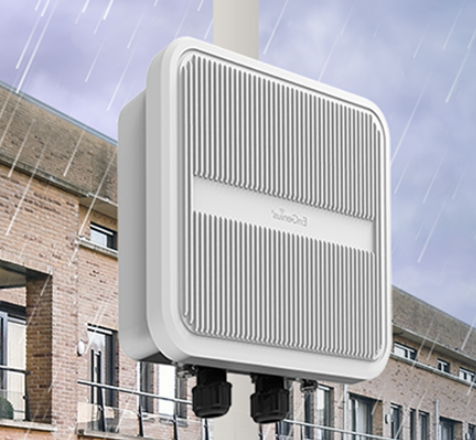
By Claus Hetting, Wi-Fi NOW CEO & Chairman
Non-linear Front End Module (FEM) technology for Wi-Fi APs is key to getting tri-band Wi-Fi 6E & Wi-Fi 7 designs right, says leading FEM provider Qorvo. The reason is that the new non-linear approach drives PA efficiency up and power consumption down. And that comes with a host of benefits, Qorvo says. Qorvo says its new non-linear FEM components are ready for the mass market and will be shipping in volumes in 2024.
Linearity of amplification has thus far been the Holy Grail of RF design including for Wi-Fi front end modules (FEMs), meaning the integrated circuits used for amplifying transmit and receive RF signals (with minimal distortion) before they reach the Wi-Fi antenna. Now an industry-wide shift in the approach to how FEMs are designed and applied is in the making, says leading FEM and RF component provider, Qorvo.

It is all about driving down power consumption and reducing thermal impact for Wi-Fi-enabled devices. “Reducing power consumption is becoming more and more critical as the number of Wi-Fi radios increases – for example in tri-band or quad-band Wi-Fi 6E or Wi-Fi 7 designs, while at the same time the trend is towards smaller form factors. This means less space and sometimes no space at all for large thermal management components like heat sinks and fans,” says Jeremy Foland, Senior Marketing Manager at Qorvo.
The solution is to use non-linear FEMs since they reduce power consumption with as much as 20-25% by requiring substantially less current flow than linear amplifiers. To avoid signal degradation through the inherent distortion, the scheme uses DPD (digital pre-distortion) techniques. The approach is new in customer premises equipment (CPEs) but is expected to be adopted widely for RF designs in the Wi-Fi 6E and Wi-Fi 7 era starting next year, Jeremy Foland says.
“State-of-the-art Wi-Fi chipsets deliver pre-distortion parameters to the non-linear FEM with a look-up table approach. In this way FEMs can be calibrated quickly and the scheme also does not require nearly any processor power, which would then again increase power consumption,” he says. The result is that non-linear FEMs perform nearly as well as their linear counterparts but much more efficiently. Most Wi-Fi chipset vendors support the lookup table approach to DPD.

Another and highly desirable result is potential cost savings due to reduced mechanical requirements and cooling needs for Wi-Fi 6E and Wi-Fi 7 gateways and APs. In addition the new approach permits high-performance multi-radio enterprise grade APs to comply with strict limits on PoE (power over Ethernet) budgets. Reduced power consumption is also important from an environmental sustainability and energy cost point of view, Qorvo points out. “There are also zero emissions requirements that we are aiming for in the longer term,” Jeremy Foland says.
Qorvo already has its first product ready. Qorvo’s QPF4702 is the company’s first non-linear FEM designed for Wi-Fi 7 and it even supports the entire 5 GHz and 6 GHz band from 5.1 to 7.1 GHz. Qorvo says it expects a long-term market shift towards non-linear FEMs with enterprise-grade APs and service provider gateways as the first to adopt the new technology.
/Claus.









